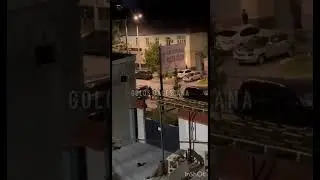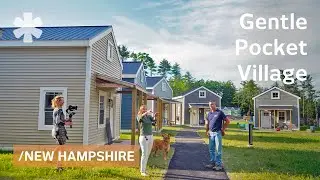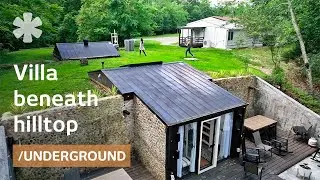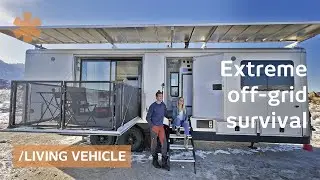Universal home-kit builds homes & campers: if IKEA/LEGO had a baby
Nick Newman helped design a modular construction system so anyone with just a mallet and a drill can build their own home. Since co-founding U-Build in 2020, he has built— and watched others build— furniture, garden sheds, tiny homes, and full-sized houses, so it makes sense he’d use the flat-pack box system to turn the company work van into his full-time home.
[Watch our first video featuring Nick's U-Build universal home-build system, a CNC-cut flat-pack design anybody can assemble to make a home: • U-Build hands-on: a flat-pack modular... ]
According to Newman, "the U-Build construction system is something like if IKEA and LEGO had a baby. So, it's these big boxes that can be assembled with a mallet and a screwdriver. Effectively, you start out with your individual panels, which are cut with precision using a CNC machine, and it's designed with this kind of locking system so you can basically put the pieces together: it would always be on the 'right' configuration." Watch it at 25:45.
[Video timeline]
— Nick Newman out in London on his electric campervan: 00:10
— Explaining EV's lack of congestion charge in London: 00:20
— Charging the van in central London: 00:50
— Thunderstorm: 2:20
— Stealth setup: 03:00
— EV van conversion into vanlife camper: 3:30
— Conversion with U-Build boxes ("building blocks") timelapse: 3:42
— Explanation of a U-Build minimum unit of construction, the box: 03:50
— Kirsten interviews Nick Newman: 04:20
— U-Build's modularity put to the test inside a van: 05:10
— Locking system for drawers (inspired by the ones on commercial aircraft): 06:30 and 14:50
— Festival build out of U-Build blocks: 07:15
— Sink: 0832
— Current van living interior: 11:30
— Adapting working straps to vanlife: 12:00
— Folding clothes: 13:05
— Hammock setup: 19:28
— At Stroud, Gloucestershire: 20:45
— U-Build's workshop under construction on an old empty factory: 21:30
— Describing U-Build as a self-build system: 25:45
— On using empty buildings: 22:10
— "People could stay in a house like this for really cheap": 22:15
— Warehouse spaces to solve housing emergencies? 22:30
— Out in Herefordshire: 36:28
— Student-built house with U-Build: 36:35
He started using the fully-electric Sprinter van as a temporary home while on overnight work trips. The U-Build system involves assembling CNC-cut, formaldehyde-free plywood boxes as building blocks which then bolt together to create a rigid frame for a structure.
The conversion cost him less than £2,000 (about $2,400, or €2,300). The system is entirely demountable, so the boxes can be reused over and over: it was easy for Newman to take the boxes he was working with daily and rearrange them in the van to build a bed, kitchen (U-Scrub), storage, and toilet (U-Poo).
Newman left a shared warehouse where he was paying £800 for a tiny, windowless bedroom for vanlife in central London, and because the van is electric, he doesn’t pay congestion charges (£15/day). He has tricked out the van to appear in drive mode so he can use the vehicle’s battery and air conditioning and heating while parked.
The U-Build (and Studio Bark) team recently bought an abandoned warehouse in Stroud (Gloucestershire) for less than the price of a tiny studio in London. While they decide what to do with the space, they have installed U-Build dwellings (built in a half day) to use as bedrooms and private offices. It’s the same model as the SHED Project, where they worked with a London-based guardian company to provide quick-build homes from U-Build kits to provide housing for those in need in exchange for building surveillance.
https://u-build.org/
/ ubuild
Nick's YouTube channel: / @electric.vanlife
Here's our story covered by Autoevolution: https://www.autoevolution.com/news/th...
On *faircompanies: https://faircompanies.com/videos/u-bu...































